
Publisher: Victory Point Games
Designer: Joseph Miranda (Based on Darin A. Leviloff’s States of Siege system)
Year: 2009
Players: 1
Ages: 12+
Playing time: 25 minutes
MSRP: $26.95
I’ll start of by saying that up until a few weeks ago I had never seen a Victory Point Games… um… game. Sure, I’d seen the ads over on BGG but I’d never actually checked the company out. I’m sorry to say I’d waited this long to do so because, if Zulus on the Ramparts! is an indication of the kind of games produced by VPG, I’ve been missing out on some great gaming! It bears mentioning right off the bat that VPG is a small game company who craft what they consider to be “boutique” titles. I suppose they know they aren’t going to sell 50,000 copies of any particular release and I have the impression that is just fine with them. I won’t get into a lot of background about the company simply because I’ll have an upcoming interview with VPG’s very own Alan Emrich in the near future.
I did mention that VPG puts together smaller titles and it must be pointed out to those out there who are overly concerned with the look of a game and all the shiny bits that they’ll be sorely disappointed at first glance when they open up one of Victory Point’s games. The reason behind this is you’ll find the maps aren’t mounted, the counters don’t have glossy finishes, the rules – although in color – aren’t page after page of illustrations, and the artwork can leave a little to be desired.. Hell, you don’t even get a box; all VPG titles come in a zip lock bag. For some this might be a turn off. I, on the other hand, found myself transported back to the games of the late 70s and 80s from such classic companies as Task Force Games, Steve Jackson Games (pre-Munchin era), Metagames and all the rest of the microgames that used to be available at the friendly local game shop for anywhere from three to eight bucks. Sure some of these were real dogs but there were a lot of classics too! Star Fleet Battles and Car Wars come immediately to mind.
So if you’re looking for ultraslick production values you might want to move along to another review right now. If you’re in the mood for a great game – and isn’t why we play the things in the first place? – read on.
Any wargamer or history buff worth their salt has no doubt seen the film Zulu. Released in 1964, and starring a very young Michael Caine in his first role, the film tells the story of the small detachment of British soldiers and their auxiliaries who held off between 3000-4000 Zulu warriors, at a mission station known as Rorke’s Drift, from the afternoon on January 22nd through the early morning of the 23rd – nearly twelve hours! Earlier on the 22nd an entire British column of nearly two thousand troops had been almost completely wiped out by an army of 20,000 at The Battle of Isandlwana. The Zulus who descended upon the mission station had not taken part in the battle earlier in the day and were spoiling for a fight!
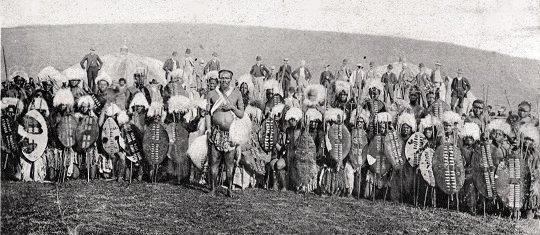
Joe Miranda’s Zulus on the Ramparts! builds on the mechanics laid out by Darin A. Leviloff and his States of Siege system game, Israeli Independence, which – I must be honest – I’ve never played. The game itself is easy to pick up and learn within about twenty to thirty minutes of reading through the rules. The objective of the Zulu impis (or regiments) is the center of the Mission itself. If they ever reach the center, the game is and automatic loss for the British. And you’re certainly rooting for a British victory because I’ve failed to mention that Zulus on the Ramparts is a solitaire game. The player will control the British forces while the movements and actions of the Zulus will be completely random. The Zulus approach via a random chit draw. There are four Zulu impis comprising “the head, horns, chest and loins” as denotes the tactics used at the time and they approach along four different paths. Depending on the chit drawn, sometimes the impis may individually move one space, sometimes two or even three! Some chits even have more than one impi advancing at the same time and that can be a rather harrowing moment.
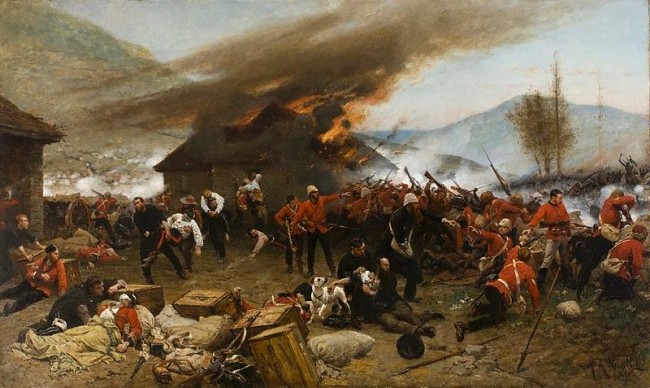
Each impi begins the game with four hits (sort of like hit points) which the concentrated volley fire may reduce over time. Don’t set your heart on eliminating the Zulus though; it takes an awfully long time for one hundred or so rifles to whittle down 4000 men! Many times simply causing the Zulus to retreat for a moment is a victory in itself. There are also situational counters that may come into play based upon actual events that took place during the battle. So may help while others hinder the British cause. I’ve mentioned the Zulus react randomly but you have a lot of control over the British.
The game includes a deck of cards which contain Volley Cards, Hero Cards and a few Event Cards. This is how the British player will determine his actions each turn. The Volley Cards are used to fire at the approaching Zulus with varying effectiveness depending on range and the quality of the card. The Hero Cards are played onto the table and are individuals who had a tremendous impact during the battle. These Heroes can be used to complete certain actions such as reloading rifles, fetching water, and building barricades. The barricade pushes what is considered the mission center further back thus delaying a Zulu victory.
Each Hero also has a pair of special abilities. One will simply put the hero back into the player’s hand to be played onto the table in a later turn and another that represents a heroic sacrifice action that requires you to discard them thus removing them from the game. This can leave you with a lot of tough decisions of when you might consider sacrificing one of your heroes to keep the hordes at bay.
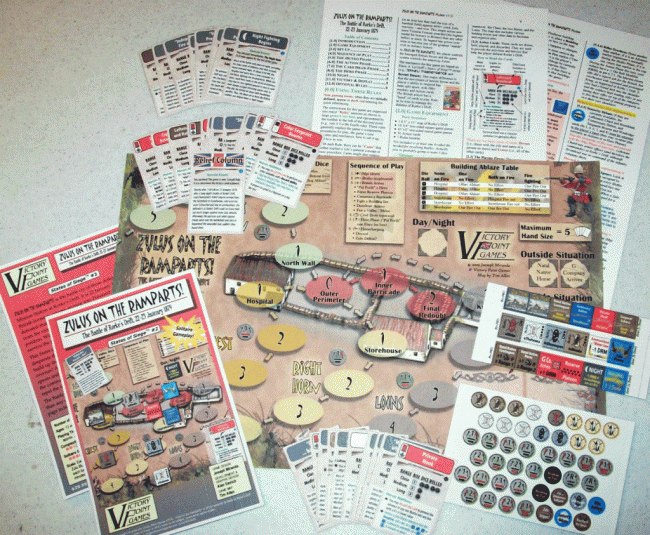 In order to achieve victory, the player must be able to hold out until the relief column arrives, which takes place within the last four cards of the deck. At around the midway point of the game night will fall (based upon an Event Card inserted into the middle of the deck) which, under most circumstances, makes the game even harder to win!
In order to achieve victory, the player must be able to hold out until the relief column arrives, which takes place within the last four cards of the deck. At around the midway point of the game night will fall (based upon an Event Card inserted into the middle of the deck) which, under most circumstances, makes the game even harder to win!
I’ll be the first to admit in my first go round I was thoroughly smoked and didn’t even make until the sun set. The second time out I was able to squeak out a win but it was a close one all the way. This leads me to something maybe all of us can agree makes a great game; wanting to play it again just after you’ve finished, regardless if you won or lost. Some games are of the “one and done” variety but I can happily say that Zulus on the Ramparts isn’t one of them. This is simply one of the best solitaire games I’ve ever had the pleasure of playing! It does an excellent job of conveying the piecemeal nature of the historical battle while providing the thrill of suddenly facing hordes of attackers streaming in at every turn. Regardless of the lackluster components, you’re getting a lot of gameplay for your money here!
The only thing holding the title back from knocking it completely out of the park is the components, as I’ve mentioned at the beginning of the review. I do understand that VPG does have a small expansion for Zulus on the Ramparts that adds some additional Hero and Volley Cards along with some rules variants. The expansion runs $5.95.
Oh, and if you were wondering about the outcome of Rorke’s Drift? The British soldiers successfully defended their garrison against the intense assault while earning themselves Eleven Victoria Crosses along with a number of other decorations and honors – The most Victoria Crosses even awarded for an action before or since! The fighting was so intense that of the 20,000 rounds of ammunition at the start of the battle (the mission station was also an ammunition depot) only 900 remained at the finish.
[rwp-review id=”0″]
- Trollfall Adventure for Tales of the Valiant is Out in PDF - Mar 28, 2025
- The Nomicon is Now Available from Mythmere Games - Mar 28, 2025
- The Sickest Witch RPG Kickstarter Passes 800% Funding Mark - Mar 28, 2025




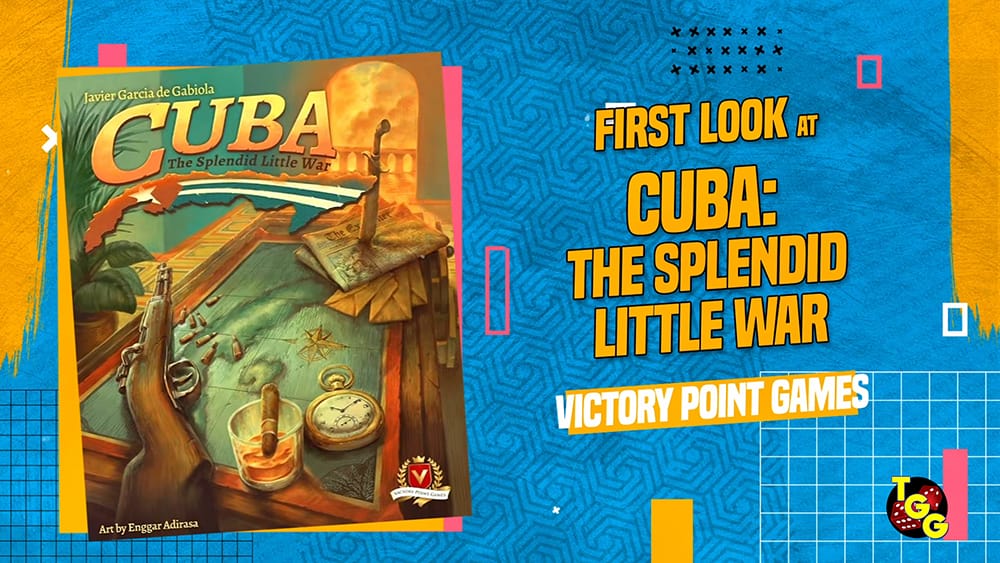
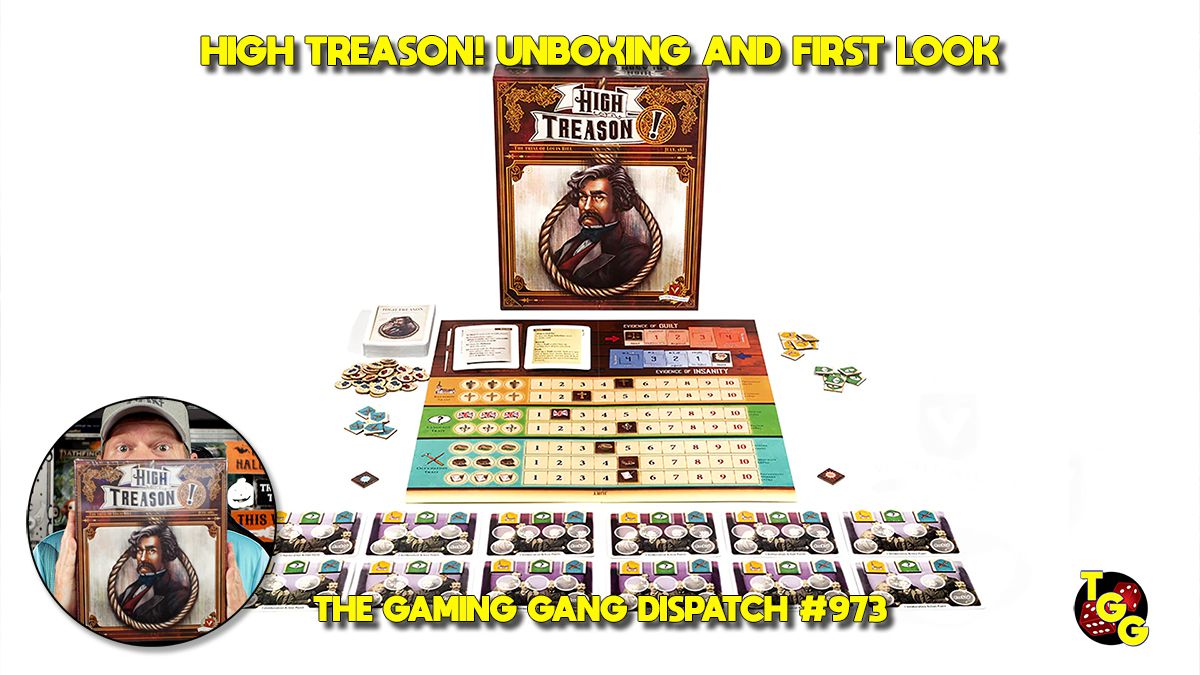
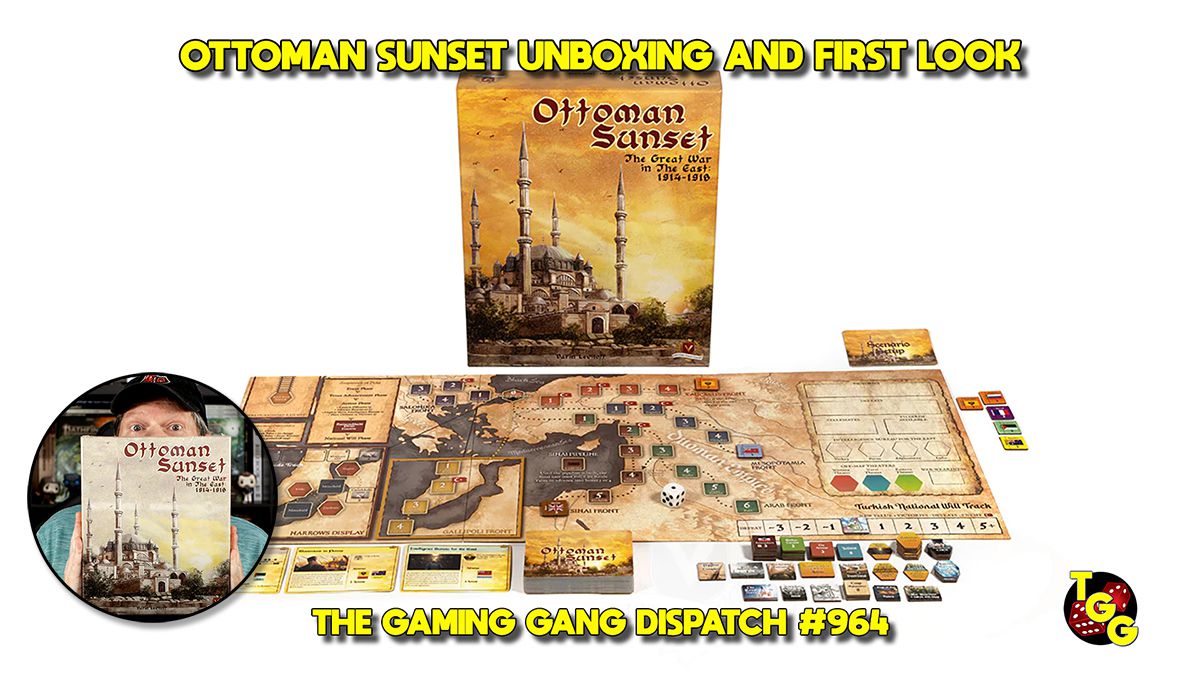


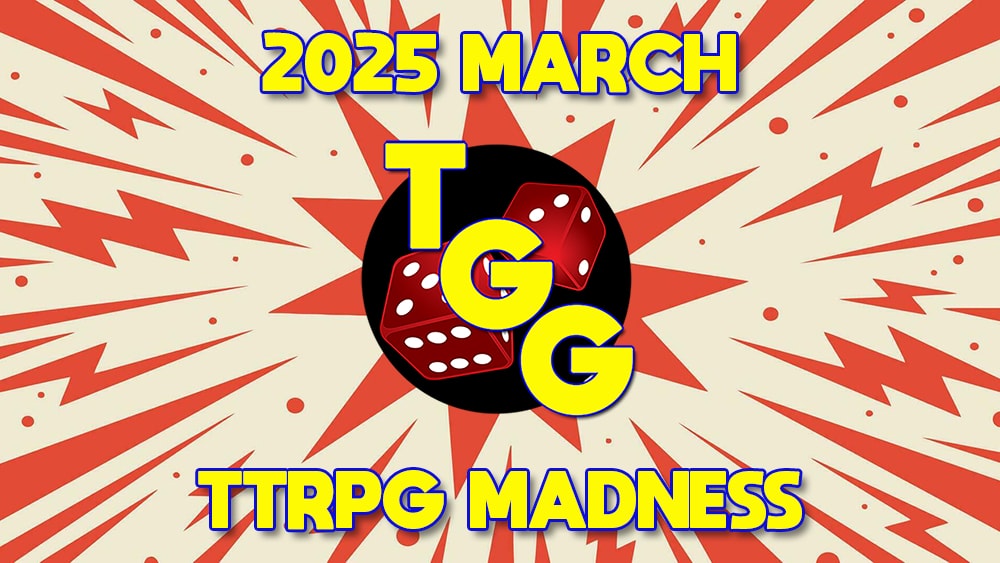
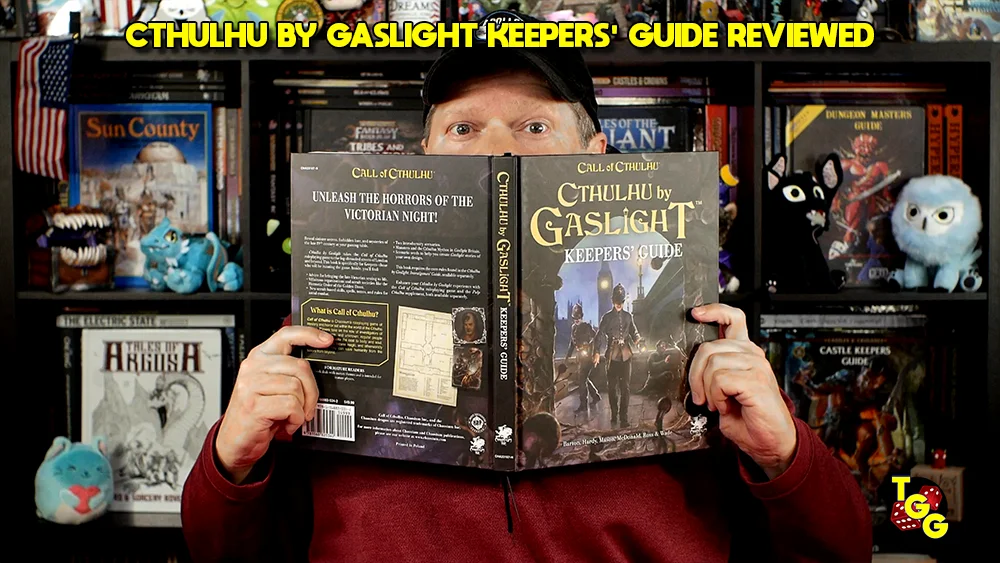









Great review! The one thing I would disagree with is that you put down “not easy to win” as a Con. The States of Siege system is Supposed to be not easy to win. In fact, normally you will lose. Which is part of what makes you keep coming back for more. Its a great concept and I would recommend Any of the other games that use the system.
BTW, for the sake of full discloser I do have a stake in the games as I am the artist that made up the maps.
Ah ha! Now I see why Tim was commenting about the “con”! I’m just kidding of course. I mentioned it not as if I had a problem with it but because there are gamers who are turned off by a game that they may not win 50% of the time. An example is the game Ghost Stories, that comes across as a great game, but the difficulty off winning turns many players away. I wouldn’t say that ZotR exactly falls into the same category – I look at Zulus as being challenging not exasperating – but it did believe it needed to be noted that it is not an easy game to win.
Very solid review with a nice flow to it. I just began playing Zulus recently, but I’m already ten plays in. Fantastic game, and I agree with your comments except the ones concerning fhe difficulty level. After a handful of plays, most attentive players should be winning around 80% of their games. You really start to find effective card combos, understand the chit pool, and learn patience. Sure, ridiculous swings of bad luck can occur, but they aren’t the norm. There’s so much room for strategy AND tactics. That’s an impressive achievement. Many games seem to treat them as mutually exclusive. The way the cards work together and have several uses is what gives this game legs for me. It has taken some table time away from Defenders of the Realm (another killer game), and I plan to hit 100 games of Zulus this year!